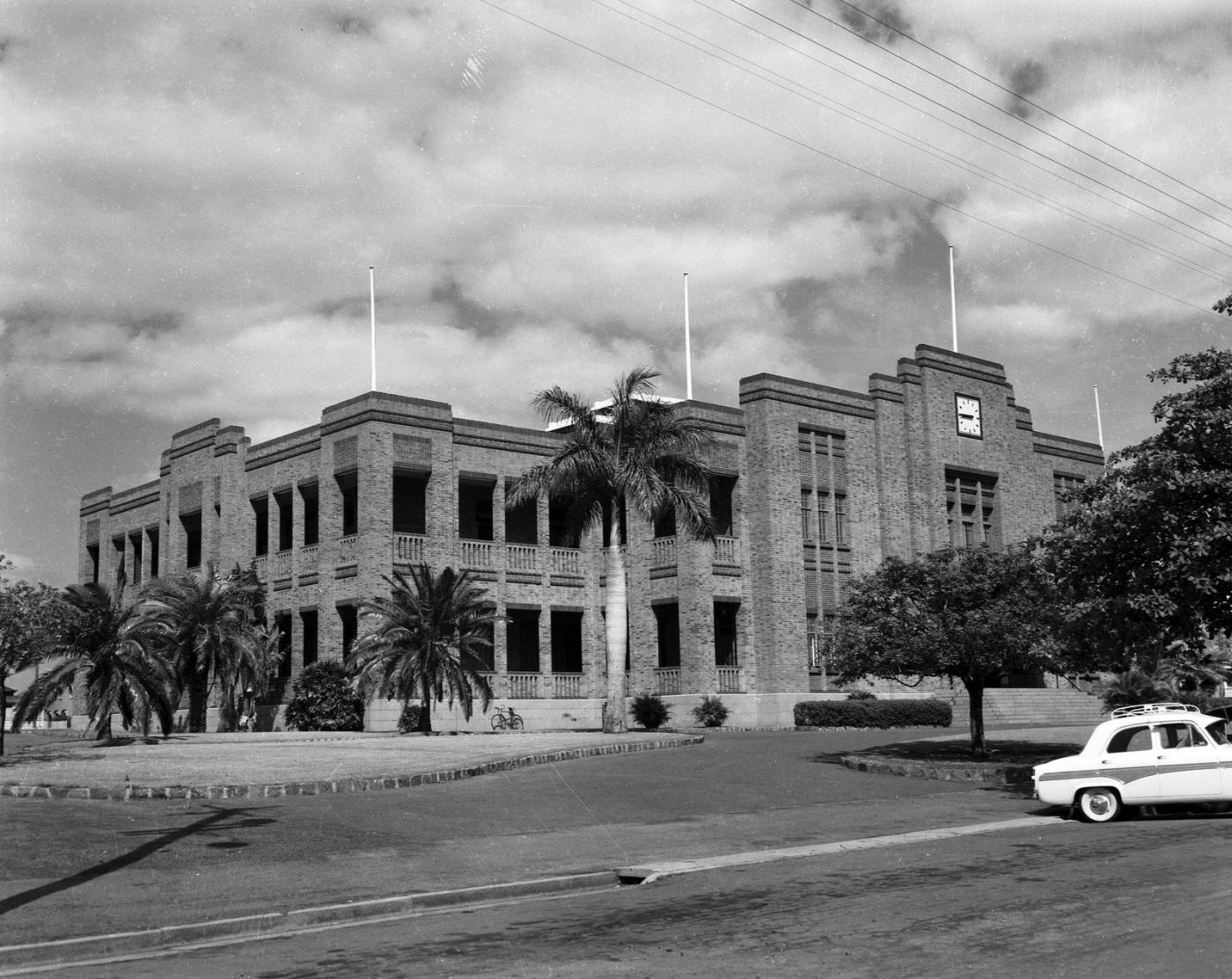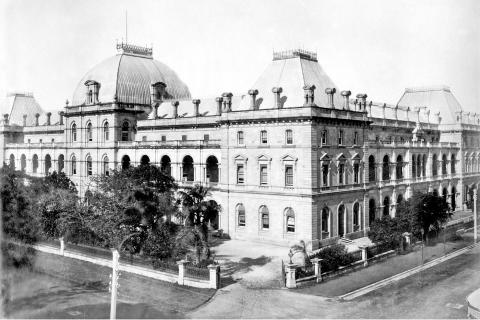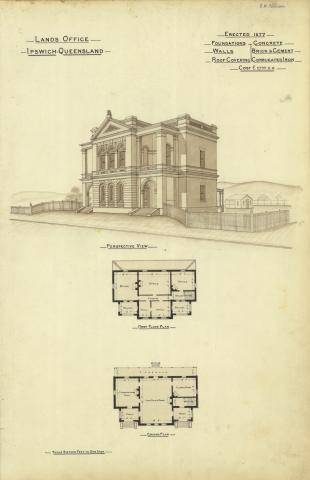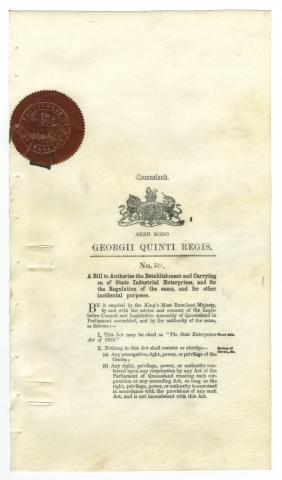
- News of the day
-
Central Queensland Herald, Thursday 13 August 1936, page 61
FOR NEW TOWN HALL
ROCKHAMPTON, August 6.
Several letters in connexion with the proposed construction of a new town hall, included in which was a notification that the Premier and Treasurer had approved of a loan of £50,000, were tabled at last night's meeting of the City Council.
Forwarding a letter received by him from the Under-Secretary to the Treasury, Mr J. Larcombe, M.L.A., advised that the Premier would give favourable consideration to the application for a loan and subsidy amounting in the aggregate to £50,000, the subsidy to be based on 60 per cent of the estimated direct wages expenditure, in connexion with the building, provided satisfactory plans and specifications were submitted for approval.
A telegram from Mr Larcombe read: “Premier and Treasurer advises having approved of a loan of £50,000 for a new town hall on the conditions as notified.”
It was decided, on the motion of Ald. Goodson, that the council meet next Monday afternoon to select a site for the proposed new town hall.
- Background
-
Rockhampton emerged as an important Queensland regional centre during the 1850s and 1860s. This development took on especial prominence after the discovery of the mining wealth at Mount Morgan in 1882. The additional affluence that flowed on for Rockhampton fuelled a rapid expansion of public and private buildings and residences throughout the City and surrounds. This building boom allowed for many grand places to be constructed, especially renowned along the commercial and government sector near the wharves on Quay Street, to the many elite residences found on 'The Range'. Despite this building expansion into the 1900s, Rockhampton never achieved a purpose built Town Hall until 1941.
An 1878 reference to premises utilised by Rockhampton's Council, stated: "OUR MUNICPAL EDDIFICES are more useful than ornamental. The Council Chambers (by one aspiring Mayor denominated "Temporary Town Hall") are of wood and iron, lined, in an airy spot, and well verandahed; on an adjoining reserve the Fire Engine Shed, and Kerosene Store, are erected."
It was not until 21 June 1897 before the first foundation stone for a future town hall was laid by a Rockhampton Mayor Mr Littler to mark the occasion of Queen Victoria's Diamond Jubilee. At this occasion Mr Littler let it be known that the Council could not proceed immediately with the building, but felt that construction would probably be able to commence some time over the next ten years. As events turned out it wasn't until a much later Mayor laid a fresh foundation stone in 1939 that the task was truly commenced.
In 1936 the City Council resurrected the idea for Rockhampton to get its own purpose built town hall. Though first muted back in 1897 and occasionally referred to in election speeches through the ensuing years, it wasn't until this year that the Council determined to invite designs for a new town hall.
Seven designs were submitted by Rockhampton and Brisbane architects, but for various reasons, particularly financial, none of these designs were found satisfactory. It wasn't until an amended design, originally submitted by the Rockhampton architectural firm of Hockings and Palmer, was accepted and the contract let to the firm of John Hutchinson and Sons (of Brisbane), before construction was able commence.
Edwin Morton Hockings (1870-1942) commenced his architectural career under the tutelage of Brisbane architect Richard Gailey. Hockings career took a major change in 1890 with his success in winning a design competition for the new Girls' Grammar School at Rockhampton. Though Gailey's firm took over the final design work, Hockings departed to Rockhampton as the firm's clerk of works. In 1895 he was elected an Associate of the Queensland Institute of Architects, and thereafter commenced his own practice in Rockhampton from where he made his design mark throughout Central Queensland.
Hockings saw service and was wounded in the Anglo-Boer War (1899-1902), where he commanded a Squadron of the Third Queensland Contingent. In this period he also formed a productive partnership (Hutton and Hockings, Architects and Building Surveyors) with A.M. Hutton, 1898-1904. Hockings went on the serve in the early part of World War One, but again returned to an architectural profession, forming another successful partnership (Hockings and Palmer) in Rockhampton with L.T. Palmer, 1916-1938. Hockings went on to form a final partnership with his son, Thomas Hocking (E.M. and T. Hockings/Hockings and Son), 1939-40. Edwin Morton Hockings survived to see the completion of his last major work, Rockhampton's Town Hall, and died in Rockhampton on 21 December 1942.
On 25 February 1939, Rockhampton's Mayor Mr R.Will Evans (1936-43), turned the first sod for the start of work on the new Town Hall, followed a month later (on 25 March) by the laying of the foundation stone. Progress though was delayed, mainly the result of a temporary shortage of building materials and wet weather particularly during the construction of the foundations. The cost of construction of this new Town Hall was approximately £50,000, and in the end took two years to complete "this massive block, which in size, design and appointments surpasses any civic centre in Queensland outside of Brisbane."
During World War 2 a great deal of responsibility rested on the shoulders of the two war-time Mayors, R. Will Evans (1936-43) and Henry Jeffries (1943-52). From August 1942, Rockhampton's Town Hall became the headquarters for General Eichelberger and the 41st Division of the United States Army. Rockhampton's City Council virtually placed the City at the disposal of army authorities, both Australian and American, and so in turn contributed to Australia's defence during the Pacific Campaign (1941-45).
Today Rockhampton's Town Hall continues to function as the hub of the City's local government authority and operations.
Courtesy of Queensland Heritage Register.
/150.5146431,-23.3821131,7/450x450@2x.png?access_token=pk.eyJ1IjoicXNhLWRpc2NvLXFsZCIsImEiOiJjamJmdTgyZXEyeWNjMnlxZm8xcmtieHgxIn0.lmT9J5tTPKGuuccQgCVSAg)



